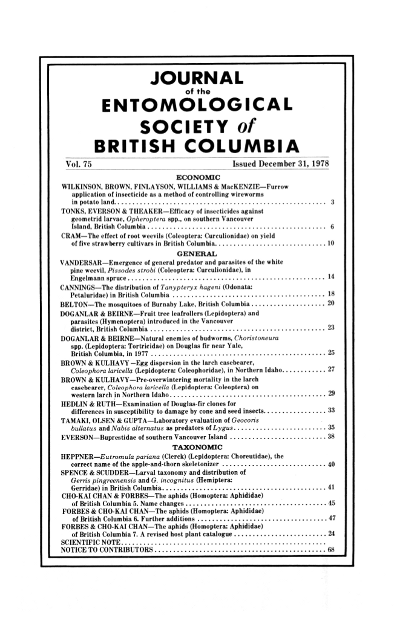Laboratory evaluation of <i>Geocoris bullatus</i> and <i>Nabis alternatus</i> as predators of <i>Lygus</i>
Keywords:
<i>Geocoris bullatus</i>, <i>Nabis alternatus</i>, <i>Lygus</i>, biological controlAbstract
Adults of <i>Geocoris bullatus</i> were not effective predators against late nymphs and adults of <i>Lygus</i>, but adults of <i>Nabis alternatus</i> were effective against these stages. Both predators were effective against the young <i>Lygus</i> nymphs. Males of <i>N. alternatus</i> were almost as successful as females against small prey but were less effective against the late-stage <i>Lygus</i>.
References
Fye, R.E. 1978. Analysis of cotton insect populations in southern Arizona: Impact of predators and other mortality factors. USDA Tech. Bull. (In press).
Johansen, C.A., E.C. Klostermeyer, A.H. Retan, and R.R. Madsen. 1976. Integrated pest management on alfalfa grown for seed. Wash. State Univ., Coll. Agric. and Coop. Ext. Serv. EM 3755. 8 p0.
Perkins, P.V., and T.F. Watson. 1972. Nabis alternatus as a predator of Lygus hesperus. Ann. Entomol. Soc. Am. 65:625-9.
Tamaki, G., and B.A. Butt. 1977. Biology of the false celery leaf tier and damage to sugarbeets. Environ. Entomol. 6:35-8.
Downloads
Published
Issue
Section
License
Authors who publish with the Journal of the Entomological Society of British Columbia agree to the following terms:
-Authors retain copyright and grant the journal right of first publication with the work simultaneously licensed under a Creative Commons Attribution License that allows others to share the work with an acknowledgement of the work's authorship and initial publication in this journal.
-Authors are able to enter into separate, additional contractual arrangements for the non-exclusive distribution of the journal's published version of the work (e.g., post it to an institutional repository or publish it in a book), with an acknowledgement of its initial publication in this journal.
-Authors are permitted and encouraged to post their work online (e.g., in institutional repositories or on their website) prior to and during the submission process, as it can lead to productive exchanges, as well as earlier and greater citation of published work (See The Effect of Open Access).


